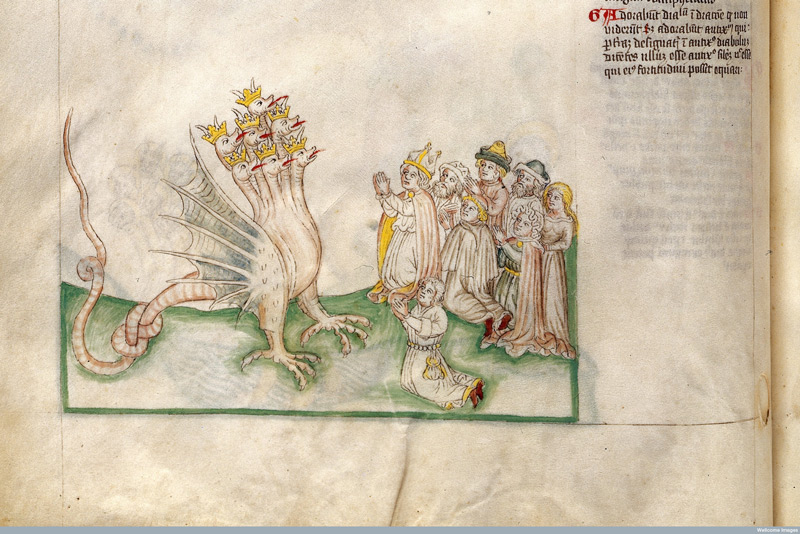I have just finished reading Paura Reverenza Terrore1 (that can be translated as Fear Reverence Terror) It is a book of “political iconography” (as the subtitle reads) by Carlo Ginzburg, an Italian historian of ideas. The book is a collection of five essays published between 2001 and 2009 and for the first time offered to the Italian reader within one publication. The five essays are shaped by Abi Warburg’s Pathosformeln (Pathos formula) that can be described as a formalised style artists use to represent strong and extreme passions which is rooted in classical art (“Gesti di emozione tratti dall’antico”. Ginzburg, 2015:13). Overall the book is an account of political philosophy through the study of the contextualised iconographic details of five artefacts and pictures that span from 1530 to 1938: the time historians may call the modern and contemporary era.

L0029329 Credit: Wellcome Library, London
Schematic diagram of the Virtues and the Good Sciences. With 66 lines of verses relating to them.
Ink and Watercolour Circa 1420-30
From: MS 49, Apocalypse, (The), [etc.]. Apocalypsis S. Johannis cum glossis et Vita S. Johannis; Ars Moriendi, etc.; Anatomical, medical, texts, theological moral and allegorical ‘exempla’ and extracts, a few in verse.
Folio 47 verso
Collection: Archives & Manuscripts
Library reference no.: WMS 49
There is another conceptual way of studying detail in historical and philosophical research. I was socialised into the importance of the detail in history of ideas by Prof Giovanni Mastroianni, with whom I started studying at the University of Calabria, and who then become my friend. From him I heard (and learned) of Warburg’s favourite saying (“the good God is in the details”) and of how this approach is relevant for any enquiry about the origin, the development and fortune of any idea. History of ideas and political philosophy have remained a loose interest of mine since I was not able to make a career and a living out of my first qualification. However I am constantly intrigued by any possibility of translating or testing concepts from the juvenile interest into one of my current professional domains (organisational consultancy).

L0029265 Credit: Wellcome Library, London
The dragon gives his power to the beast of the sea – People worship the dragon
Ink and Watercolour Circa 1420-30
From: MS 49, Apocalypse, (The), [etc.]. Apocalypsis S. Johannis cum glossis et Vita S. Johannis; Ars Moriendi, etc.; Anatomical, medical, texts, theological moral and allegorical ‘exempla’ and extracts, a few in verse.
Folio 15 verso
Collection: Archives & Manuscripts
Library reference no.: WMS 49
I found myself wondering if and how an organisational consultant pays attention to detail in their relationship with the client system and in the design and delivery of any intervention. I know I do and it is not anything peculiar or unique to my professional practice. I know consultants who are used to working with the “here and now” and with emergent processes do engage heavily with the detail and the interpretation. Recently I was working with a client system in a data gathering and feedback intervention. I was on site for a week engaging the various stakeholders in understanding what the underlining organisational issues were that prompted the request for an intervention in the first place. The formulation of an initial working hypothesis to feedback to the representative of the client system was difficult and only when the detail that kept coming up in interviews took central stage was I able to formulate a plausible working hypothesis to offer to the client system. Perhaps the detail stands to the working hypothesis like the fractal stands to the system?
1 Ginzburg G. (2015).Paura Reverenza Terrore. Cinque saggi di iconografia politica. Adelphi: Milan
Additional reading.
Ginzburg G. (1992) The Cheese and the Worms: The Cosmos of a Sixteenth-Century
Ginzburg G. (1990) Clues, Myths, and the Historical Method. Radius
Image Credit: Wellcome Library, London.